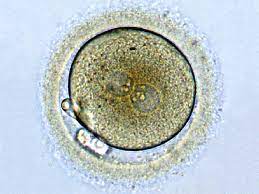
There has been much discussion and debate surrounding the Supreme Court’s impending decision on a case that could strike down Roe v Wade. The legal arguments raised by the case—involving privacy, fundamental rights, “super-precedents,” stare decisis, and the like—are important. The case is also significant since it involves questions of human life.
As it happens, in my AP Biology class we are currently studying (and yikes, about to be tested on) mitosis and meiosis. From this unit I have learned that the creation of a unique human life does in fact happen at conception, the single moment in time when the sperm fertilizes the egg. I have also learned just how unlikely life is.
Here is a brief, and I hope, comprehendible summary of what we’ve talked about the last two weeks in class. Meiosis is a special kind of cell division that produces haploid daughter cells. Haploids are cells that have half the number of chromosomes as diploids, cells that have the complete set. For humans, haploids have 23 chromosomes and diploids have 46. Meiosis is really a part of a beautiful life cycle. The haploid cells are gametes, reproductive cells and they have half the DNA that a person needs to live. Low and behold, during fertilization two haploids, a sperm and an egg, join together, and a diploid cell is made. The 23 chromosomes from each make the 46 that all human cells need to survive.
The cell is the simplest unit of life—that is one of the unifying themes in biology. We all come from that one cell that was conceived during fertilization. Every cell in our body now can be traced back to that one single cell made of an egg and a sperm. That one cell undergoes mitosis, which unlike meiosis, preserves the diploid number when it divides. Thus, that first cell divided into two and those two divided, and this continues until we die.
The chance of each and every one of us coming into being is not one in a million. It is one in infinity. There are 8.4 million possible combinations of chromosomes that males and females can produce in their gametes due to the principle of independent assortment. That does not take into account crossing over, the process by which chromosomes mix and match with others, creating unique chromosomes and therefore genes for the potential individual. Thus, there really is an infinite number of different sperm and eggs that males and females can produce respectively, and no one will ever make the same exact sperm or egg.
On top of this, the chance of conception is small. Sperm have to go on a potentially three-day journey to reach the egg. They have special features called flagella that propel them to the egg, but the chance that they make it is 1 in 14 million. The egg actually will help the sperm, sending chemical signals to guide them.
And that is why life is such a miracle. We undergo a special cell division that produces unique haploid cells that by themselves are meaningless, but when joined to another constitute a new organism with a complete DNA. No one human is ever the same (unless in the case of identical twins) as crossing over and independent assortment ensures that each and every sperm and egg cell is different from one another. And finally, that trip to conception is one of great difficulty. Hundreds of millions of sperm are on a mission, and only so often will one make it to the egg.
The creation of a fertilized egg is such an unlikely event that when it does happen it should be marveled at and cherished. Afterall, each and every one of us was once that single cell that was conceived against all the odds.





































Sun down wolf out • Feb 1, 2022 at 9:27 pm
Great piece, u deserve a raise wolf ??
Bobbert • Jan 31, 2022 at 9:14 pm
I love you Wolf
Johnathan Sugma • Jan 21, 2022 at 11:02 am
(3/3) Great work and I can’t wait for your next piece where you defend OJ Simpson by copy/pasting the Websters definition of a stab wound and then talking about how unrivaled his Rushing Yard Stats are.
Johnathan Sugma • Jan 21, 2022 at 11:02 am
(2/3) Chances of pregnancy are low, but not as low as you writing a coherent argument beyond explaining to ppl with uteruses that because you take AP Bio, you have legislative power over their bodies.
Johnathan Sugma • Jan 21, 2022 at 10:59 am
(1/3) Hey nice article on Roe v. Wade, I especially like the part where you read out the Wikipedia definition of conception, call it a “miracle” and then don’t talk about the court case once.
Anonymous • Jan 20, 2022 at 12:49 am
Actually multiple sperm make it to the egg. It’s just that it takes a lot of sperm to erode the egg’s protein barrier. Thx.